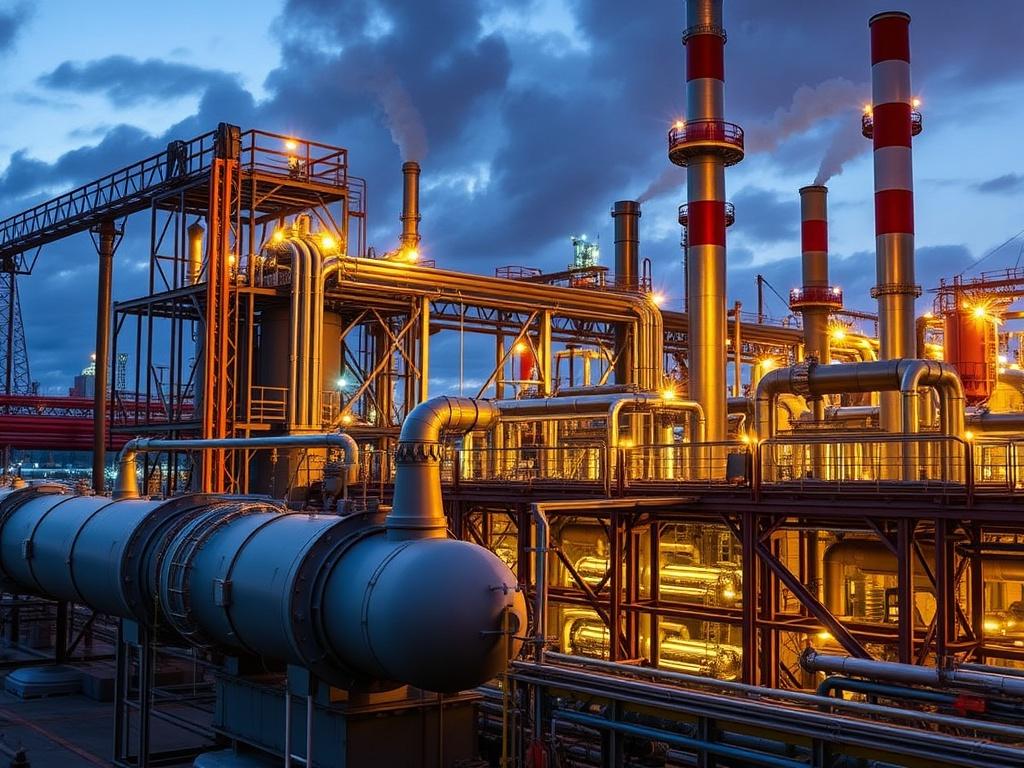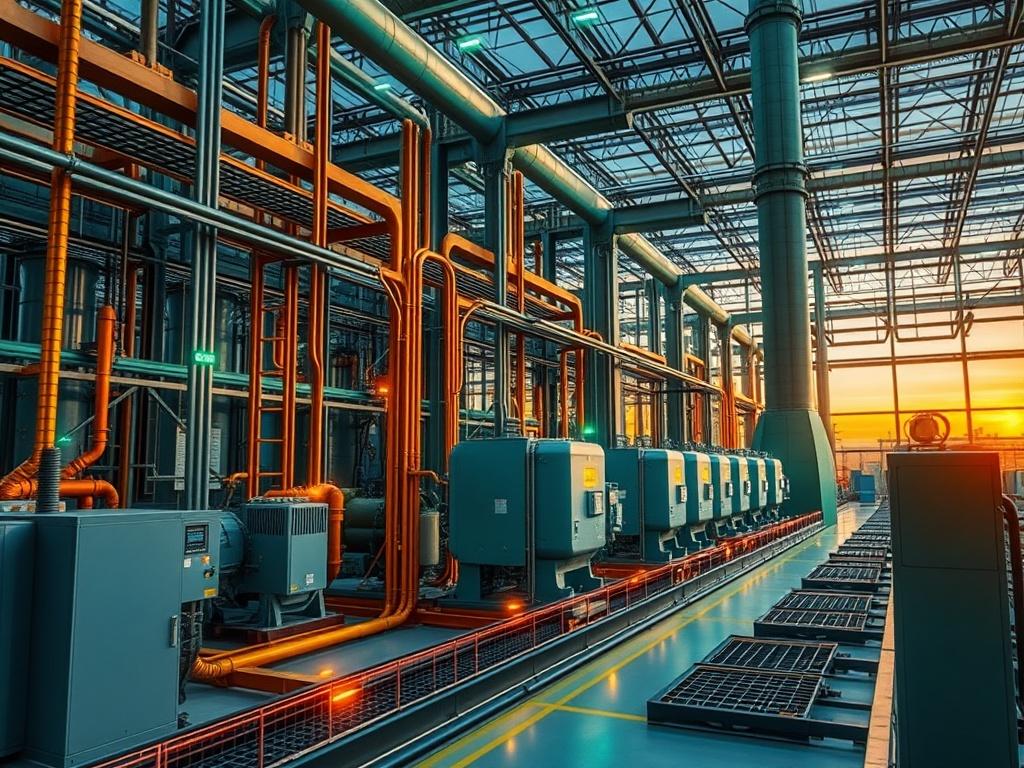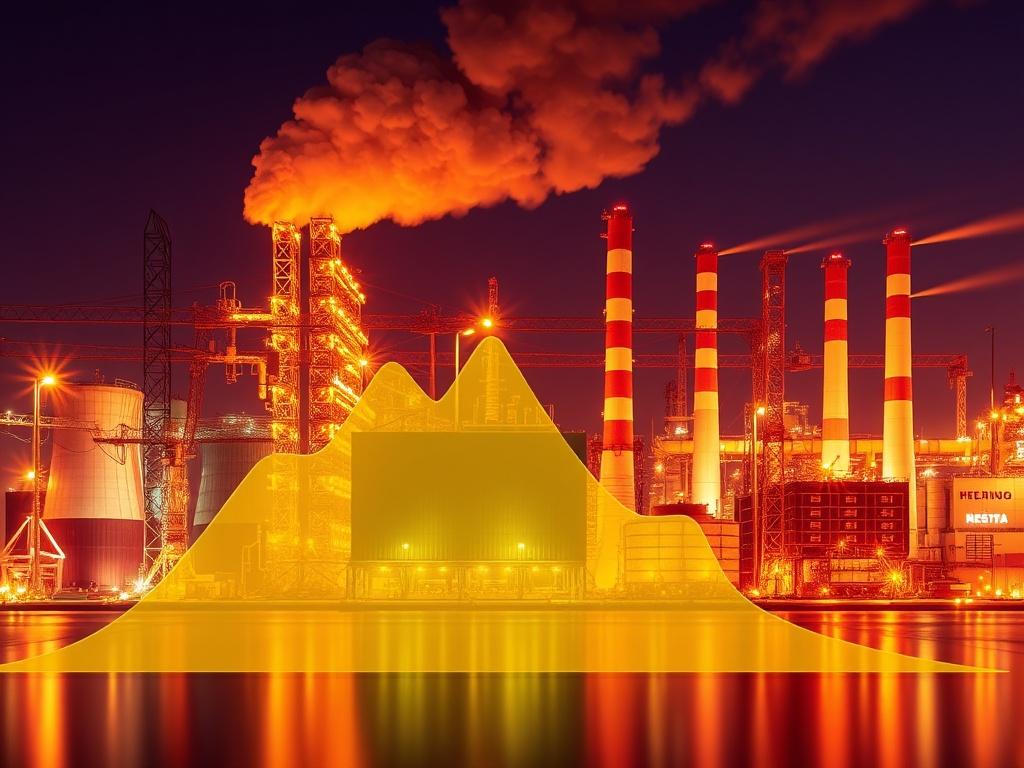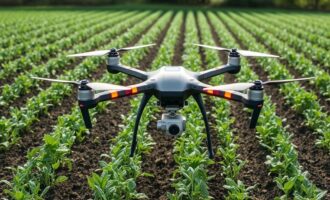- Understanding Industrial Energy Optimization
- The Growing Need for AI Solutions in Industrial Energy Optimization
- Common Challenges in Industrial Energy Management Addressed by AI
- How AI Technologies Power Industrial Energy Optimization
- 1. Machine Learning and Predictive Analytics
- 2. Deep Learning for Complex Pattern Recognition
- 3. Internet of Things (IoT) Integration
- 4. Reinforcement Learning for Autonomous Control
- 5. Digital Twins
- Use Cases: AI Solutions Driving Industrial Energy Optimization in Practice
- Manufacturing Plants
- Chemical and Petrochemical Facilities
- Mining Operations
- Power Generation and Utilities
- Measuring Success: Key Metrics in AI-Driven Industrial Energy Optimization
- Steps to Implement AI Solutions for Industrial Energy Optimization
- Future Trends in AI for Industrial Energy Optimization
- Edge AI for Real-Time Decision Making
- Integration with Renewable Energy Systems
- Advanced Digital Twins and Simulation
- Enhanced Cybersecurity Measures
- Cross-Industry Collaborative Platforms
- Challenges and Considerations When Adopting AI Solutions
- Summary Table: Benefits vs. Challenges of AI in Industrial Energy Optimization
- Conclusion
In today’s rapidly evolving industrial landscape, energy optimization is no longer just a goal—it’s a necessity. As companies strive to increase efficiency, minimize costs, and reduce their environmental footprint, the role of advanced technologies such as artificial intelligence (AI) has taken center stage. Industrial energy optimization leverages AI solutions in remarkable ways, offering unprecedented insights and capabilities that enable industries to rethink how they consume and manage energy. This article delves into the dynamic relationship between industrial energy optimization and AI, exploring how these innovative solutions are reshaping industries across the globe.
Understanding Industrial Energy Optimization
Before diving into AI-driven approaches, it’s essential to grasp what industrial energy optimization truly entails. At its core, industrial energy optimization refers to the systematic process of minimizing energy consumption while maintaining or enhancing production output and quality. This concept focuses on identifying inefficiencies, reducing waste, and managing energy use smartly across all stages of industrial operations.
Industrial sectors, ranging from manufacturing and chemical processing to mining and utilities, consume vast amounts of energy. Inefficient practices not only increase operational costs but also exacerbate environmental challenges, such as greenhouse gas emissions. Energy optimization helps mitigate these issues by aligning consumption with actual need and optimizing processes to run more smoothly.
Industrial energy optimization is often approached through a combination of process improvements, equipment upgrades, behavioral changes, and technological interventions. While traditional energy management techniques have paved the way, AI solutions now unlock entirely new possibilities by enabling predictive analytics, real-time monitoring, and autonomous control.
The Growing Need for AI Solutions in Industrial Energy Optimization

The industrial sector faces mounting pressure from regulatory bodies, stakeholders, and consumers to adopt sustainable practices. Simultaneously, energy prices fluctuate unpredictably, and industries look for ways to stabilize operational costs. In this context, AI solutions offer a powerful toolkit to meet these challenges head-on.
Artificial intelligence can process vast amounts of data generated by sensors, machines, and control systems, transforming raw information into actionable insights. Unlike conventional energy management systems that rely heavily on static rules and manual analysis, AI solutions continuously learn and adapt to evolving conditions. This dynamic approach enables companies to uncover hidden patterns, predict equipment failures, and optimize energy consumption with precision.
AI-driven industrial energy optimization results in several benefits that appeal to organizations of all sizes:
- Enhanced Efficiency: AI algorithms optimize production schedules and energy usage to minimize waste without sacrificing performance.
- Cost Reduction: Real-time monitoring and predictive maintenance reduce downtime and lower energy expenses.
- Environmental Impact: By reducing energy consumption, industries can shrink their carbon footprint and contribute to sustainability goals.
- Compliance and Reporting: AI-driven analytics facilitate accurate compliance with energy regulations and simplify reporting processes.
Common Challenges in Industrial Energy Management Addressed by AI
Before AI adoption, companies often struggled with several energy-related challenges:
- Data Overload: Managing gigantic amounts of data from disparate systems without clear visibility.
- Complex Process Interactions: Difficulty in understanding how different process variables interact and influence energy usage.
- Manual Analysis Limitations: Time-consuming and error-prone human analysis of energy consumption patterns.
- Reactive Rather Than Proactive Strategies: Energy-saving actions are often taken after problems occur rather than anticipated beforehand.
AI solutions tackle these challenges directly. Machine learning models efficiently process and synthesize large datasets, enabling predictive insights about energy needs and process bottlenecks. Advanced sensor networks combined with AI allow continuous real-time monitoring, helping companies shift from reactive to proactive energy management strategies.
How AI Technologies Power Industrial Energy Optimization

The application of AI in industrial energy optimization spans a range of technologies, each providing unique capabilities:
1. Machine Learning and Predictive Analytics
Machine learning algorithms analyze historical and real-time data from equipment and processes to identify trends that impact energy consumption. They can forecast demand spikes, detect anomalies suggesting malfunction or inefficiency, and estimate optimal operating conditions. Using these predictive analytics, industries can schedule production and equipment use to minimize energy waste.
2. Deep Learning for Complex Pattern Recognition
Industries with intricate processes, such as chemical plants or semiconductor manufacturing, require identifying nuanced interactions between multiple variables influencing energy use. Deep learning models excel at parsing such complexity and extracting high-dimensional patterns, which traditional methods might miss. This capability helps in fine-tuning operations for energy savings without compromising product quality.
3. Internet of Things (IoT) Integration
The IoT ecosystem provides the foundational data architecture for AI-driven energy optimization. Sensors continuously collect data on temperature, pressure, power draw, and other parameters at various points across industrial equipment and systems. AI systems analyze this rich stream of data to maintain optimal energy flows and detect inefficiencies in near real-time.
4. Reinforcement Learning for Autonomous Control
Reinforcement learning, a branch of AI where algorithms learn by trial and error within an environment, is increasingly popular in automated process control. In industrial energy management, reinforcement learning models can make autonomous decisions on equipment operation, adapting dynamically to changing conditions to minimize energy consumption effectively.
5. Digital Twins
Digital twins are virtual replicas of physical industrial systems that AI models use to simulate and test different energy optimization scenarios without risk to actual operations. This simulation capability accelerates experimentation and helps predict the energy impacts of operational changes before implementation.
Use Cases: AI Solutions Driving Industrial Energy Optimization in Practice
The theoretical benefits of AI translate into tangible successes across many industries. Let’s explore some real-world examples where AI solutions have made a compelling difference:
Manufacturing Plants
In manufacturing, energy optimization often involves managing complex assembly lines and maintaining HVAC (heating, ventilation, and air conditioning) systems efficiently. AI-powered predictive maintenance reduces machine downtime by forecasting failures related to energy-hungry equipment. Adaptive control systems optimize motor speeds and lighting, synchronizing with production schedules to use energy only when necessary.
Chemical and Petrochemical Facilities
These energy-intensive plants benefit enormously from AI’s ability to model and optimize chemical reactions and thermal processes. Deep learning enables continuous adjustment of process conditions, balancing yield and energy consumption. The result: significant energy savings without compromising safety or product quality.
Mining Operations
Mining involves heavy machinery and complex logistics, making energy costs a substantial part of operational expenses. AI-based energy management systems optimize routes, machinery usage, and power distribution. Furthermore, predictive analytics help reduce equipment idle times, directly translating to lower fuel and electricity consumption.
Power Generation and Utilities
Power plants integrate AI to optimize fuel combustion, manage grid load, and predict peak demand periods. Smart grid applications use AI to balance supply and demand dynamically, incorporating renewable energy sources and reducing reliance on fossil fuels. This integration bolsters grid reliability while prioritizing energy efficiency.
Measuring Success: Key Metrics in AI-Driven Industrial Energy Optimization
Tracking progress is essential to validate the effectiveness of AI solutions. Common metrics in industrial energy optimization include:
| Metric | Description | Importance |
|---|---|---|
| Energy Consumption per Unit of Production | Measures how much energy is used to produce a single unit of output. | Indicates efficiency improvements and cost savings. |
| Peak Demand Reduction | Tracks reduction in highest energy demand periods to avoid excess charges. | Helps manage energy costs and grid stress. |
| Carbon Emission Reduction | Quantifies decrease in greenhouse gas emissions due to optimized energy use. | Supports environmental compliance and corporate sustainability goals. |
| Equipment Uptime and Reliability | Measures operational availability and integrity of machinery. | Directly impacts energy consumption and production efficiency. |
| Return on Investment (ROI) | Calculates financial returns from AI energy optimization implementations. | Validates business value of AI investments. |
Steps to Implement AI Solutions for Industrial Energy Optimization
Integrating AI into existing industrial energy management requires a well-structured approach to maximize benefits. Here are the crucial steps typically involved:
- Assessment: Conduct an energy audit and data readiness assessment to understand current consumption patterns and available data sources.
- Goal Setting: Define clear objectives for energy reduction, cost savings, and sustainability targets aligned with business priorities.
- Data Integration: Establish IoT sensor networks and data collection systems to provide comprehensive, high-quality inputs for AI analytics.
- Model Development: Collaborate with AI experts to develop machine learning models tailored to specific operational contexts.
- Pilot Testing: Run AI solutions on select processes or facilities to validate performance and identify necessary adjustments.
- Full Deployment: Scale successful AI systems across the industrial operation with continuous monitoring and iterative improvement.
- Training and Change Management: Equip staff with the knowledge and tools required to leverage AI insights and embrace data-driven energy management.
Future Trends in AI for Industrial Energy Optimization

As AI technology advances, the potential for deeper industrial energy optimization grows exponentially. Here are some notable trends to watch for:
Edge AI for Real-Time Decision Making
Moving AI processing closer to the source of data (edge computing) reduces latency and bandwidth needs, enabling faster, localized energy management decisions without reliance on centralized cloud infrastructure.
Integration with Renewable Energy Systems
AI will play an increasing role in harmonizing industrial energy use with renewable energy supply, optimizing battery storage, and managing variable output from wind and solar power.
Advanced Digital Twins and Simulation
Digital twins will become more sophisticated, incorporating AI-driven scenario planning to support real-time operational optimization and long-term strategic decisions.
Enhanced Cybersecurity Measures
As AI systems become critical to industrial energy management, ensuring their security against cyber threats will be paramount, prompting innovations in AI-empowered cybersecurity defenses.
Cross-Industry Collaborative Platforms
Shared AI platforms across industries could foster knowledge exchange, benchmarking, and collective innovation in industrial energy optimization.
Challenges and Considerations When Adopting AI Solutions
While AI solutions offer exciting opportunities, several challenges remain:
- Data Quality and Availability: Poor or insufficient data can severely limit AI effectiveness.
- Integration Complexity: Old legacy systems may not easily interface with new AI technologies.
- Skill Gaps: Organizations often need to develop or hire AI and data science expertise.
- Cost and ROI Uncertainty: Initial investments may be high, and ROI timelines can vary.
- Cultural Resistance: Employees may be hesitant to trust AI-driven decisions or change established processes.
Addressing these challenges requires careful planning, strong leadership support, and ongoing collaboration between technology providers and industrial operators.
Summary Table: Benefits vs. Challenges of AI in Industrial Energy Optimization
| Benefits | Challenges |
|---|---|
|
|
Conclusion
Industrial energy optimization empowered by AI solutions is no longer a distant vision but a present-day reality driving profound changes across multiple sectors. By harnessing advanced data analytics, machine learning, and automation technologies, industries can unlock significant energy savings, reduce environmental impacts, and improve operational resilience. While challenges such as data integration, cost, and workforce readiness remain, a carefully orchestrated approach combined with ongoing innovation promises to overcome these hurdles. Embracing AI for industrial energy optimization is more than a technological upgrade—it’s an essential strategic move toward a sustainable, efficient, and competitive future in industrial operations. As AI continues to evolve, the opportunity to fine-tune energy usage with precision will only grow, making industries smarter and greener in unprecedented ways.
Как вам статья?







